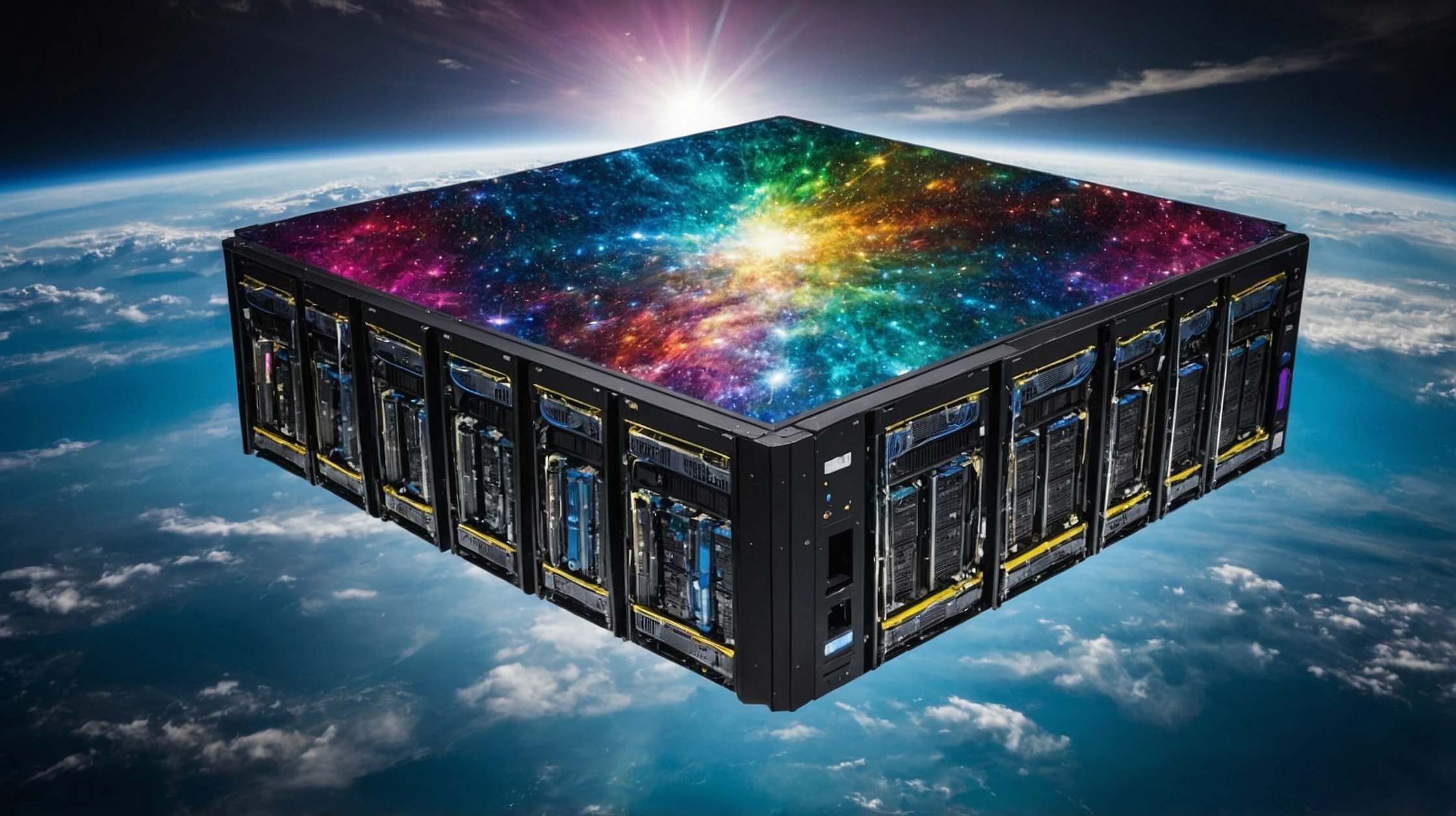Cross-platform gaming has revolutionized how we connect with friends across different devices, but understanding the technology behind it can seem complex.
Whether you’re a curious gamer or considering developing cross-platform capabilities, this comprehensive guide breaks down everything you need to know about how cross-platform gaming actually works in 2025.
What Is Cross-Platform Gaming? The Technical Foundation

Cross-platform gaming, also known as crossplay, allows players using different gaming platforms, PC, PlayStation, Xbox, Nintendo Switch, and mobile devices, to play together in the same game session.
Unlike traditional gaming where you were limited to playing only with others on your specific console, cross-platform technology creates unified gaming experiences across all major platforms.
The foundation of cross-platform gaming relies on three core technical components- unified servers, standardized communication protocols, and platform-agnostic user identification systems.
These elements work together to create seamless multiplayer experiences regardless of whether you’re gaming on a high-end PC or a smartphone during your commute.
The Architecture Behind Cross-Platform Gaming and How Developers Make It Work

Unified Server Infrastructure
Modern cross-platform games operate on centralized server systems that act as neutral ground for all platforms.
Instead of maintaining separate servers for each console, developers create unified server clusters that can communicate with any supported platform.
This approach eliminates the traditional barriers that kept PlayStation players separate from Xbox users.
The server infrastructure handles several critical functions: matchmaking across platforms, maintaining consistent game states, managing player data synchronization, and ensuring fair gameplay regardless of hardware differences.
Companies like Epic Games have pioneered this approach with titles like Fortnite, creating robust systems that can handle millions of concurrent cross-platform players.
Popular games like Call of Duty: Warzone, Rocket League, Minecraft, Apex Legends, and Fall Guys have all successfully implemented these unified server architectures, demonstrating how effective cross-platform infrastructure can support massive player bases across PC, PlayStation, Xbox, Nintendo Switch, and mobile platforms simultaneously.
Cross-Platform Account Systems
One of the most significant technical achievements in cross-platform gaming is the development of universal account systems.
These systems allow players to maintain their progress, purchases, and social connections across multiple platforms using a single account identity.
Epic Games Account, Riot ID, and Activision accounts serve as prime examples of how developers create platform-agnostic identity systems.
Games like Valorant, Overwatch 2, and Genshin Impact utilize these universal accounts to let players seamlessly switch between PC and mobile, or console and PC, while maintaining all their progress, character unlocks, and friend connections.
These accounts store player data in cloud-based systems rather than on individual consoles, enabling seamless transitions between devices.
Network Protocol Standardization

Cross-platform gaming requires standardized communication protocols that can translate between different platform-specific networking systems.
PlayStation Network, Xbox Live, Steam, and mobile networks all use different underlying technologies, but cross-platform games must create translation layers that allow these systems to communicate effectively.
This standardization extends to input handling, where developers must account for different control methods, keyboard and mouse, various controller types, and touch controls, while maintaining competitive balance and fairness across all input methods.
Platform-Specific Challenges and Solutions in 2025
Performance Balancing Across Hardware

A gaming PC with a high-end graphics card provides significantly different performance than a mobile device or older console generation.
Modern cross-platform games implement several solutions to address these disparities:
Dynamic Quality Scaling: Games automatically adjust visual fidelity, frame rates, and rendering complexity based on detected hardware capabilities while maintaining gameplay parity.
Separate Matchmaking Pools: Some games create separate competitive environments for different input methods or performance tiers while still allowing cross-platform social play.
Input-Based Lobbies: Advanced matchmaking systems can separate keyboard/mouse players from controller users in competitive modes while allowing mixed input in casual gameplay. Games like Fortnite and Call of Duty offer players the choice to opt into mixed-input lobbies or stay within their preferred input method for competitive integrity.
Data Synchronization and Cloud Save Systems

Cross-platform gaming requires sophisticated data synchronization systems that can handle complex game states across multiple platforms simultaneously.
Modern games implement cloud-based save systems that continuously sync player progress, inventory, and settings across all connected platforms.
The technical implementation involves conflict resolution algorithms that determine which data takes precedence when players access the same account from multiple devices.
These systems must handle everything from simple progress saves to complex multiplayer state synchronization in real-time.
Security and Anti-Cheat in Cross-Platform Environments

Unified Anti-Cheat Systems
Cross-platform gaming presents unique security challenges since each platform has different built-in security measures and potential vulnerabilities.
Console platforms generally have more robust built-in security than PC gaming, while mobile platforms face entirely different threat vectors.
Modern cross-platform games implement unified anti-cheat systems that can detect suspicious behavior regardless of platform.
These systems use machine learning algorithms to identify patterns that indicate cheating, account sharing, or other violations across all supported platforms simultaneously.
Popular titles like Apex Legends and Call of Duty: Warzone have invested heavily in cross-platform anti-cheat solutions that monitor gameplay patterns across PC, console, and mobile simultaneously, ensuring fair play regardless of platform choice.
Account Security Across Platforms
Managing account security across multiple platforms requires sophisticated identity verification and protection systems.
Players must be able to securely link multiple platform accounts to their universal gaming account while maintaining security standards that satisfy all platform holders.
Two-factor authentication, device registration, and behavioral analysis help protect cross-platform accounts from unauthorized access while ensuring legitimate players can seamlessly switch between platforms without security friction.
The Business Evolution of Cross-Platform Gaming

Platform Holder Cooperation
The current state of cross-platform gaming represents a significant shift in how major platform holders approach their business models.
Historically, Sony, Microsoft, and Nintendo maintained closed ecosystems to drive hardware sales and retain exclusive user bases.
The success of cross-platform titles has forced a reevaluation of these strategies. Microsoft led the charge with their “play anywhere” initiatives, followed by gradual adoption from Sony and Nintendo.
This cooperation required extensive technical collaboration to ensure security, revenue sharing, and user experience consistency across competing platforms.
Revenue Sharing Models
Cross-platform gaming has created complex revenue sharing models between developers, publishers, and platform holders.
When a player purchases content on one platform but plays on another, sophisticated backend systems track usage patterns and distribute revenue accordingly.
These systems monitor where purchases are made, where content is consumed, and how much time players spend on each platform.
The data feeds into revenue sharing algorithms that ensure all stakeholders receive appropriate compensation for cross-platform engagement.
The Future of Cross-Platform Gaming Technology

Cloud Gaming Integration
The integration of cloud gaming services like Xbox Cloud Gaming, GeForce Now, and emerging competitors is creating new possibilities for cross-platform experiences.
Cloud gaming eliminates hardware limitations and allows the same game instance to be accessed from virtually any device with internet connectivity.
This evolution means cross-platform gaming is expanding beyond traditional console and PC boundaries to include smart TVs, tablets, and other connected devices as legitimate gaming platforms.
Artificial Intelligence and Personalization
Advanced AI systems are being developed to enhance cross-platform gaming through intelligent matchmaking, dynamic difficulty adjustment, and personalized content delivery across platforms.
These systems learn from player behavior across all platforms to create optimized experiences regardless of which device is being used.
Cross-Platform Gaming Best Practices for Players

Optimizing Your Cross-Platform Setup
To get the most out of cross-platform gaming, players should understand how to optimize their setup across multiple platforms.
Account management is crucial, maintain consistent usernames and profiles across platforms to help friends find you easily, and link all platform accounts to your primary gaming account to ensure progress synchronization.
Network optimization is equally important, as cross-platform gaming relies heavily on internet connectivity.
Ensure stable connections across all devices and understand how different platforms handle network prioritization for the best possible gaming experience.
Managing Cross-Platform Friend Lists
Modern cross-platform games offer sophisticated social features that work across all platforms.
Learn how to effectively manage cross-platform friend lists, create parties with mixed platform groups, and utilize cross-platform communication features to stay connected with your gaming community regardless of platform preferences.
Conclusion – The Technical Marvel of Modern Cross-Platform Gaming
Cross-platform gaming in 2025 represents one of the most significant technical achievements in the gaming industry.
The complex systems that enable seamless gameplay across different platforms, hardware configurations, and input methods require sophisticated engineering solutions that continue to evolve.
Understanding how cross-play gaming works enhances appreciation for the technical complexity behind seemingly simple multiplayer experiences.
As the technology continues advancing with cloud gaming integration and AI enhancement, cross-platform gaming will become even more seamless and ubiquitous.
Whether you’re a casual player enjoying games with friends across different platforms or a developer considering cross-platform implementation, the technical foundation of cross-platform gaming provides fascinating insights into modern game development and the future of interactive entertainment.

